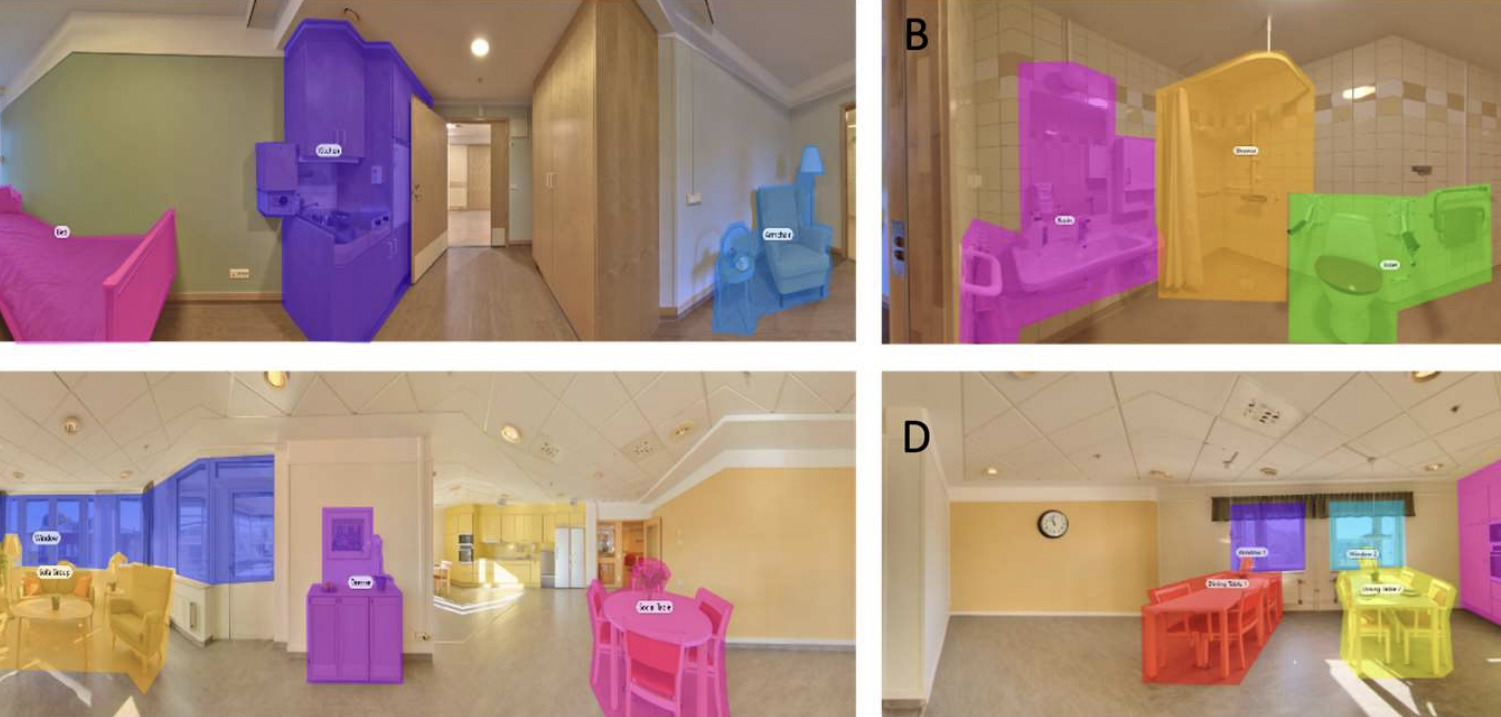
VR versions of built environments are a valid platform for testing users’ response to designs, according to new research.
An experiment measured the emotional responses and experiences of a sample of 10 people with a mean age of 69, and eight health workers when exploring an elderly care home in Stockholm, Sweden. Half of the test subjects viewed the real facility first. The other half viewed a desktop VR version (generated by London-based digital twin and visual intelligence start-up Spinview) first. Both sets of subjects then swapped over to the other environment.
Subjects were instructed in both environments to imagine that they had just moved in and that this was the first time they had visited the care home with everything in place. They were encouraged to feel at home and informed that it was okay to walk around as they pleased.
Their emotional reactions to both the physical and VR environments were recorded and compared. This was measured with eye-tracking technology provided by Stockholm-based Tobii. This recorded how the participants navigated their digital and physical environments. Galvanic skin responses, a method for measuring emotions, were also taken.
After each visit, the test subjects answered questions about their experience and filled out a so-called State Trait Anxiety Inventory. This diagnoses anxiety and establishes whether the anxiety experienced was a reaction or an existing trait.
The results showed no statistical differences between visits to the real care home and visits to the desktop VR version, for both the elderly and health worker participants.
Spaces affect emotions
Dr Katarina Gospic, the lead neuroscientist on the experiment, said: “We spend 90% of our lives in buildings. We know that spaces affect human emotions, health and behaviour. The beauty of this study is that it has great application to society.
“Desktop digital twins are a cheap, scalable method that can be used to understand people’s emotional perception of a space. They allow architects, designers, real estate planners and other professionals to get data early on to drive the basis for decision-making when designing a new space. This could really improve the way we design spaces to boost health.”
She added: “The tool has other applications as well. By allowing experts from different professions to experience a space in this way, they can derive unique perspectives on health and safety issues. With concrete tools and measurements to quantify the emotional experience of a space, this could be used as part of a company’s sustainability report. Working smart from the start is sustainable from an economic, human, and environmental point of view.”
Spinview co-founder and CEO Linda Wade said: “Digital twin technology provides a cost-effective way of assessing both the design and health of a space. We look forward to future collaborations across academic, public and private spheres to encourage sustainable design and building practices.”
Also involved in the experiment was Nordic real estate developer NREP. It was part-funded by Formas, the Swedish council for sustainable development.
Don’t miss out on BIM and digital construction news: sign up to receive the BIMplus newsletter.














